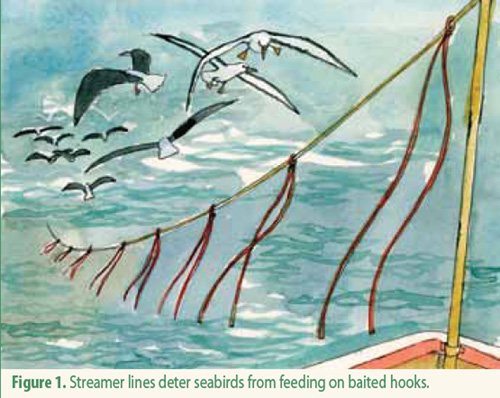A report published last year by the USA's National Marine Fisheries Service aims to help monitor progress in reducing bycatch of non-target fish, marine mammals, sea turtles, and seabirds caught incidentally in fishing.
The National Bycatch Report provides the first national compilation of bycatch estimates for living marine resources of the United States at the fishery and species level. Observer data were available for 110 commercial fisheries in 2005. The retrospective report provides a baseline for measuring bycatch reduction and establishes a consistent, comprehensive methodology for future studies.
Since 2005, important steps have been taken to address bycatch in fisheries across the country. A Bycatch Reduction Engineering Program, which commenced in 2008, supports scientists working with fishers to test gear and fishing modifications to help generate changes in fishing practices and technological solutions to avoid bycatch, allow non-targeted species to escape nets or lines, and reduce harm to those species incidentally caught and released.
The report provides baseline bycatch estimates for 481 species, including marine mammals, sea turtles, seabirds, and fish. It also presents bycatch estimates for 81 fisheries, which are defined by a combination of area, species, and fishing gear. For example, the report states that in Hawaii longline vessels reduced seabird interactions (mainly with albatrosses) by 92-95% by thawing and dying fish bait blue to make it less visible to the birds.
Future editions of the report (the next one is due in 2013) will be used to monitor changes and trends in bycatch, including as a result of new regulations, bycatch reduction devices, changes in fishing patterns, and population fluctuations in both targeted and bycatch species.
[Information taken from an official press release and the report's executive summary]

Reference:
Karp, W.A., Desfosse, L.L. & Brooke, S.G. (Eds) 2011. U.S. National Bycatch Report. First Edition. Silver Spring: National Marine Fisheries Service. NMFS-F/SPO-117C. 508 pp.
Click here for a visual presentation of the report.
With thanks to Barry Baker for information.
John Cooper, ACAP Information Officer, 21 February 2012

 English
English  Français
Français  Español
Español